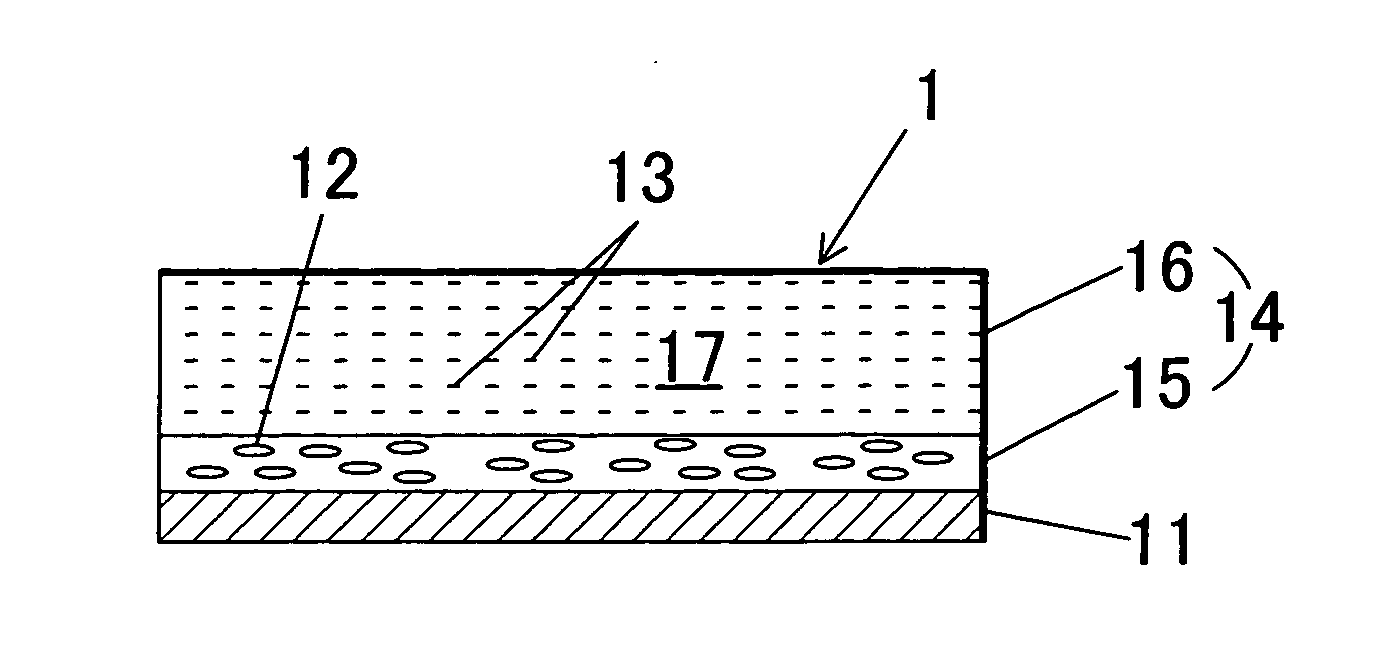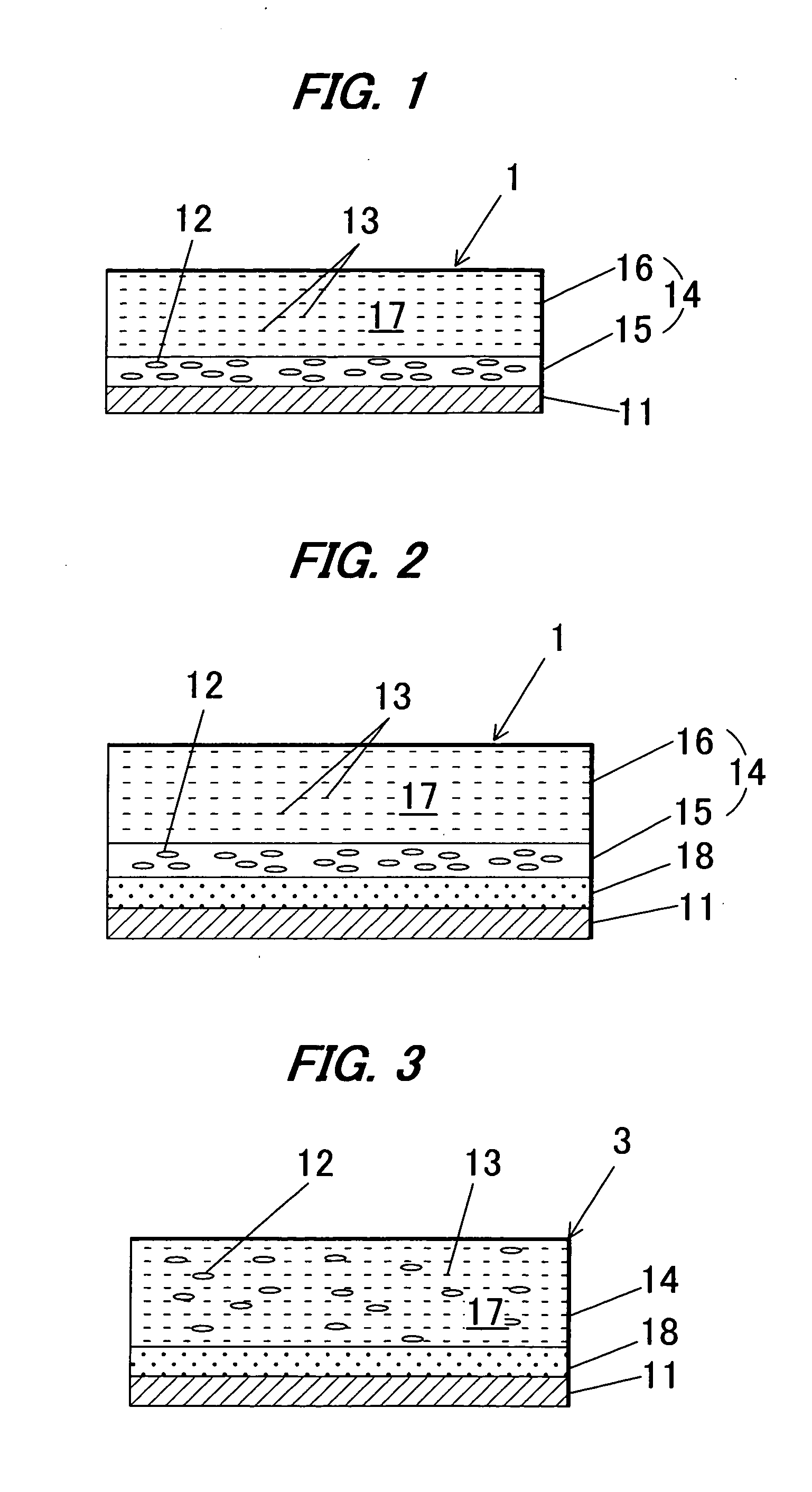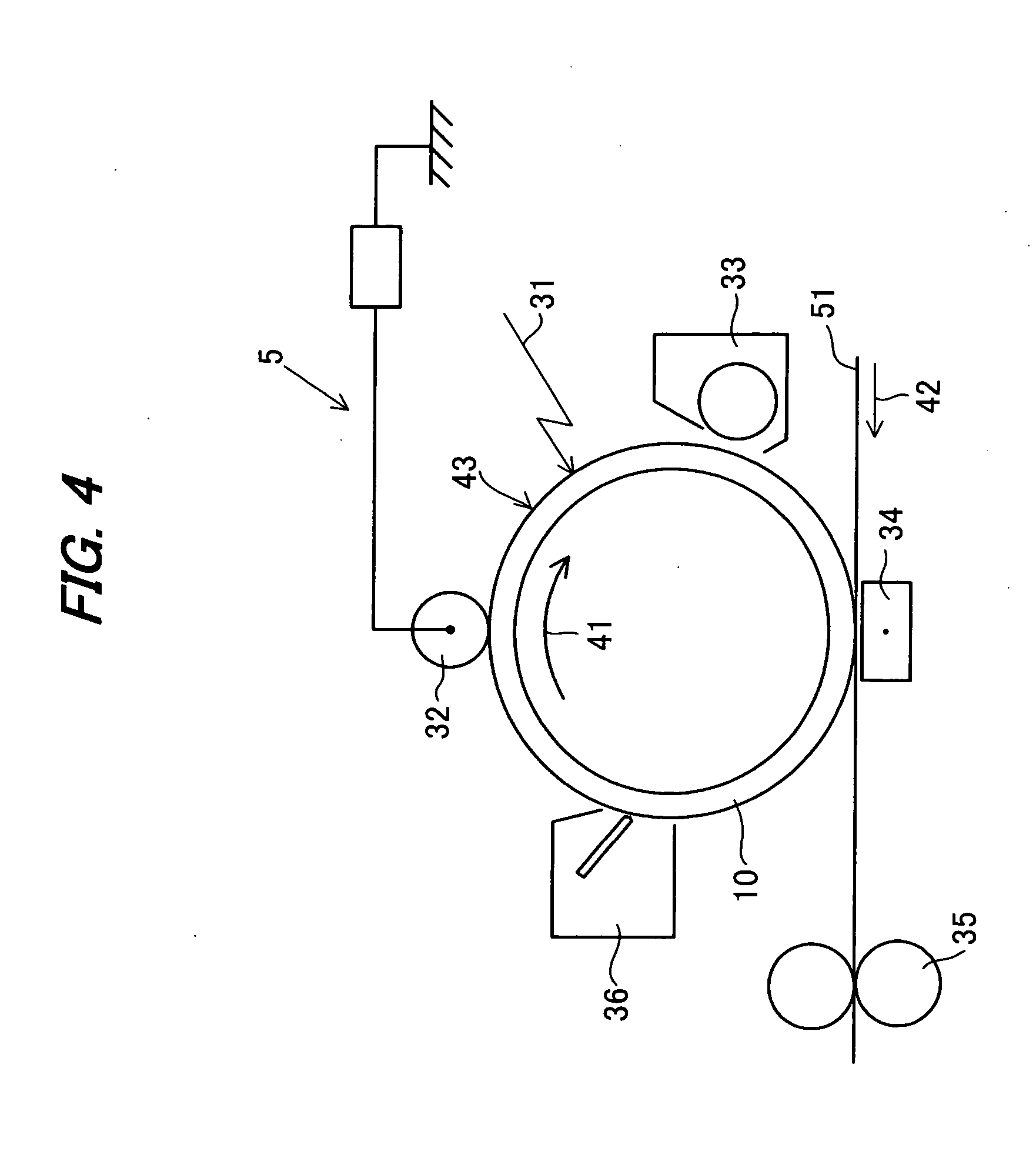Organic photoconductive material and, using the same, electrophotographic photoreceptor and image forming device
- Summary
- Abstract
- Description
- Claims
- Application Information
AI Technical Summary
Benefits of technology
Problems solved by technology
Method used
Image
Examples
preparation example 1
Preparation of Example Compound No. 28
preparation example 1-1
Preparation of Enamine Intermediate
[0153] Added to 100 ml toluene are 21.9 g (1.0 equivalent) of N-phenyl-α-naphtylamine, represented by the following structural formula (8), 20.6 g (1.05 equivalents) of diphenyl acetaldehyde, and 0.23 g (0.01 equivalent) of DL-10-camphor sulfonic acid, and the mixture is heated to react for 6 hours while water as a byproduct was removed out of the system as an azeotrope with toluene. After the end of the reaction, the reaction solution was condensed to about one tenth ( 1 / 10) the volume, and then slowly dropped into an intensively stirred 100 ml volume of hexane so as to become crystalline. The resultant crystals were filtered off and washed with cold ethanol. As a result, a light yellow powdery compound in an amount of 34.9 g was obtained.
[0154] The resultant compound was analyzed by the liquid chromatography-mass spectrometry (abbreviation: LC-MS) analysis, and a peak at 398.4, which corresponds to a molecular ion [M+H]+, that is, the enamine...
preparation example 1-2
Preparation of Enamine-Bis-Aldehyde Intermediate
[0156] Phosphorus oxichloride in an amount of 18.4 g (2.4 equivalents) was slowly added to 100 ml anhydrous N,N-dimethylformamide (DMF) while being cooled with ice, and stirred for about 30 minutes to prepare a Vilsmeier reagent. The enamine intermediate, obtained by the preparation example 1-1 and represented by the above structural formula (10) in an amount of 19.9 g (1.0 equivalent) was slowly added to this solution while being cooled with ice. Then, the solution was slowly heated to 110 deg. C. for reaction and stirred for 3 hours while being continuously heated to keep 110 deg. C. After the end of the reaction, this reaction solution was left to cool. Then the solution was slowly added to a cooled, 4 normal (4N) 800 ml sodium hydroxide solution so that a precipitate was formed. The obtained precipitate was filtered off, sufficiently washed with water, and then re-crystallized from a solvent mixture of ethanol and ethyl acetate. ...
PUM
| Property | Measurement | Unit |
|---|---|---|
| Angle | aaaaa | aaaaa |
| Angle | aaaaa | aaaaa |
| Electrical conductor | aaaaa | aaaaa |
Abstract
Description
Claims
Application Information
 Login to View More
Login to View More - R&D
- Intellectual Property
- Life Sciences
- Materials
- Tech Scout
- Unparalleled Data Quality
- Higher Quality Content
- 60% Fewer Hallucinations
Browse by: Latest US Patents, China's latest patents, Technical Efficacy Thesaurus, Application Domain, Technology Topic, Popular Technical Reports.
© 2025 PatSnap. All rights reserved.Legal|Privacy policy|Modern Slavery Act Transparency Statement|Sitemap|About US| Contact US: help@patsnap.com



